Tropical plants are known for their vibrant colors, exotic leaves, and lush foliage. Having these beautiful plants in your home can create a unique and attractive atmosphere, making your indoor space feel like a tropical paradise. Growing tropical plants indoors may seem challenging, but with the right care and environment, anyone can do it successfully. In this complete guide, we’ll show you how to choose the best tropical plants, create a suitable environment, and maintain your indoor tropical garden.
Key Takeaways
- Choosing the right plants: Select tropical plants that adapt well to indoor conditions.
- Environment setup: Provide the right temperature, humidity, and lighting for healthy growth.
- Maintenance: Regular watering, feeding, and cleaning are essential for healthy plants.
- Potential issues: Learn to identify and solve common problems like pests and yellowing leaves.
- Styling tips: Use different plant sizes and pots to create a beautiful indoor tropical garden.
Table of Contents
ToggleWhy Grow Tropical Plants Indoors?
Growing tropical plants indoors not only enhances the beauty of your home but also offers numerous benefits:
- Air Purification: Tropical plants like the Peace Lily and Rubber Plant help purify the air by removing toxins.
- Humidity Control: These plants add moisture to the air, which can be beneficial in dry indoor environments.
- Stress Reduction: Being surrounded by greenery has been shown to reduce stress and improve mood.
- Visual Appeal: With their vibrant colors and unique shapes, tropical plants can turn any indoor space into a stunning visual delight.
Related Link: Learn more about the benefits of indoor plants
Choosing the Best Tropical Plants for Indoor Spaces
Choosing the right tropical plants is the first step to creating a thriving indoor garden. Not all tropical plants will adapt well to indoor conditions, so it’s important to pick species that can tolerate lower light levels and controlled temperatures. Here are some top choices:
Also Read: 9 Easy Low-Light Indoor Plants
1. Monstera Deliciosa (Swiss Cheese Plant)
Monstera is a popular tropical plant known for its large, split leaves. It thrives in indirect sunlight and can grow quite large, making it an ideal statement piece.
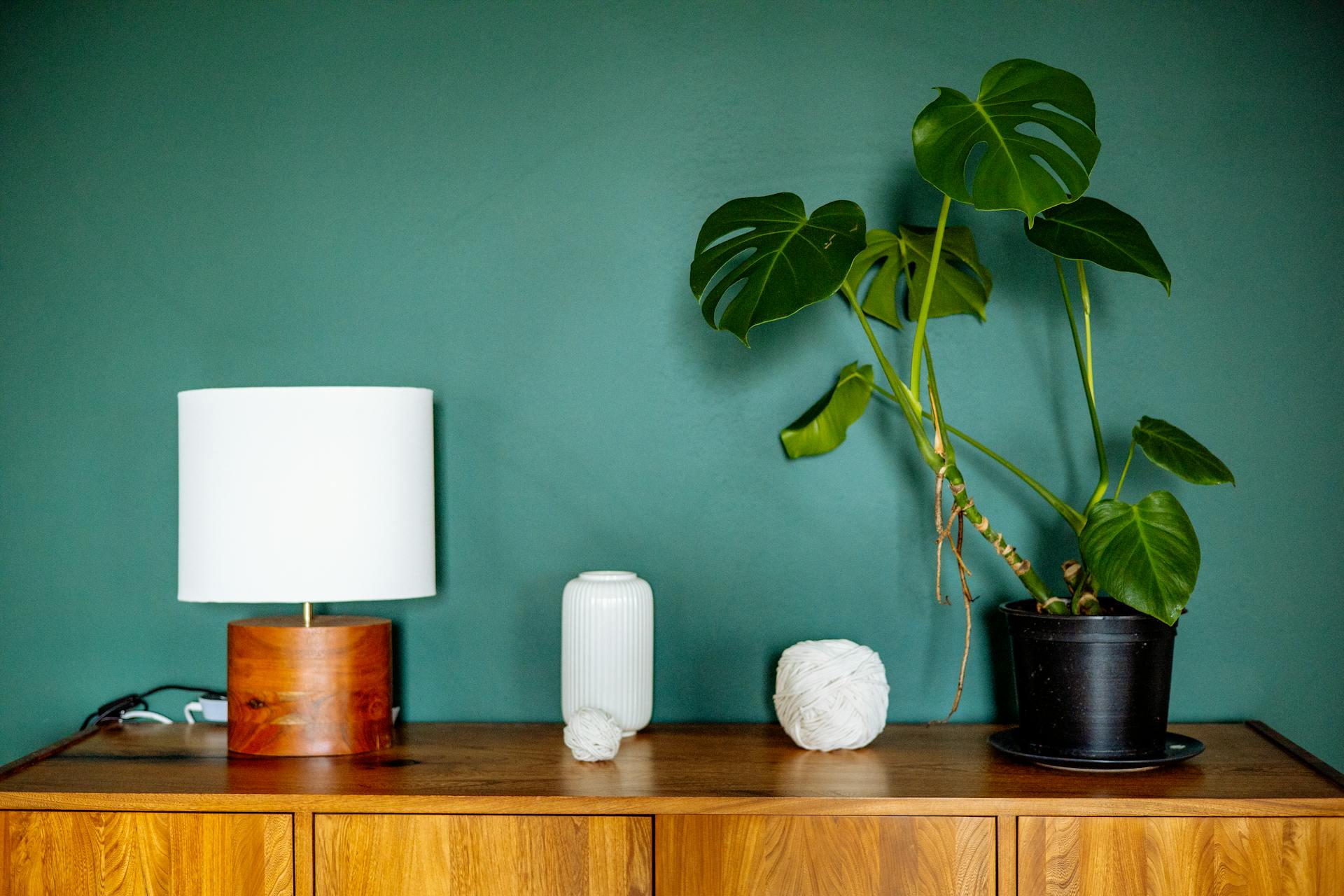
- Light: Bright, indirect light.
- Water: Water when the top inch of soil is dry.
- Humidity: High humidity is preferred.
More Info: Monstera Plant Care Guide
2. Philodendron
Philodendrons are versatile and come in various shapes and sizes. They are low-maintenance and adapt well to indoor conditions.
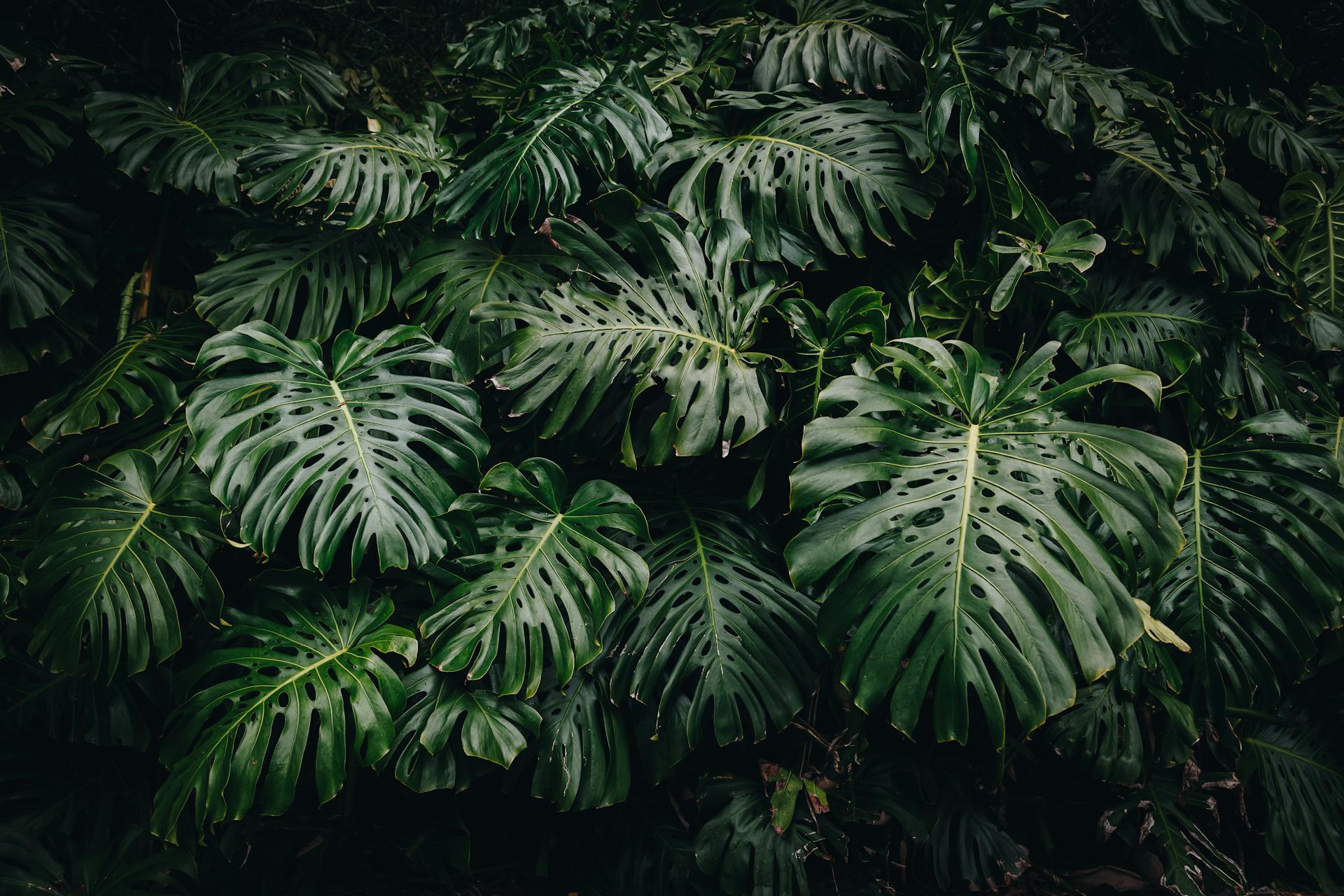
- Light: Medium to low light.
- Water: Keep the soil moist but not waterlogged.
- Humidity: Tolerates average humidity.
Learn More: Philodendron Care Tips
3. Fiddle Leaf Fig (Ficus Lyrata)
This plant has broad, glossy leaves and is often used as a decorative piece in living rooms.
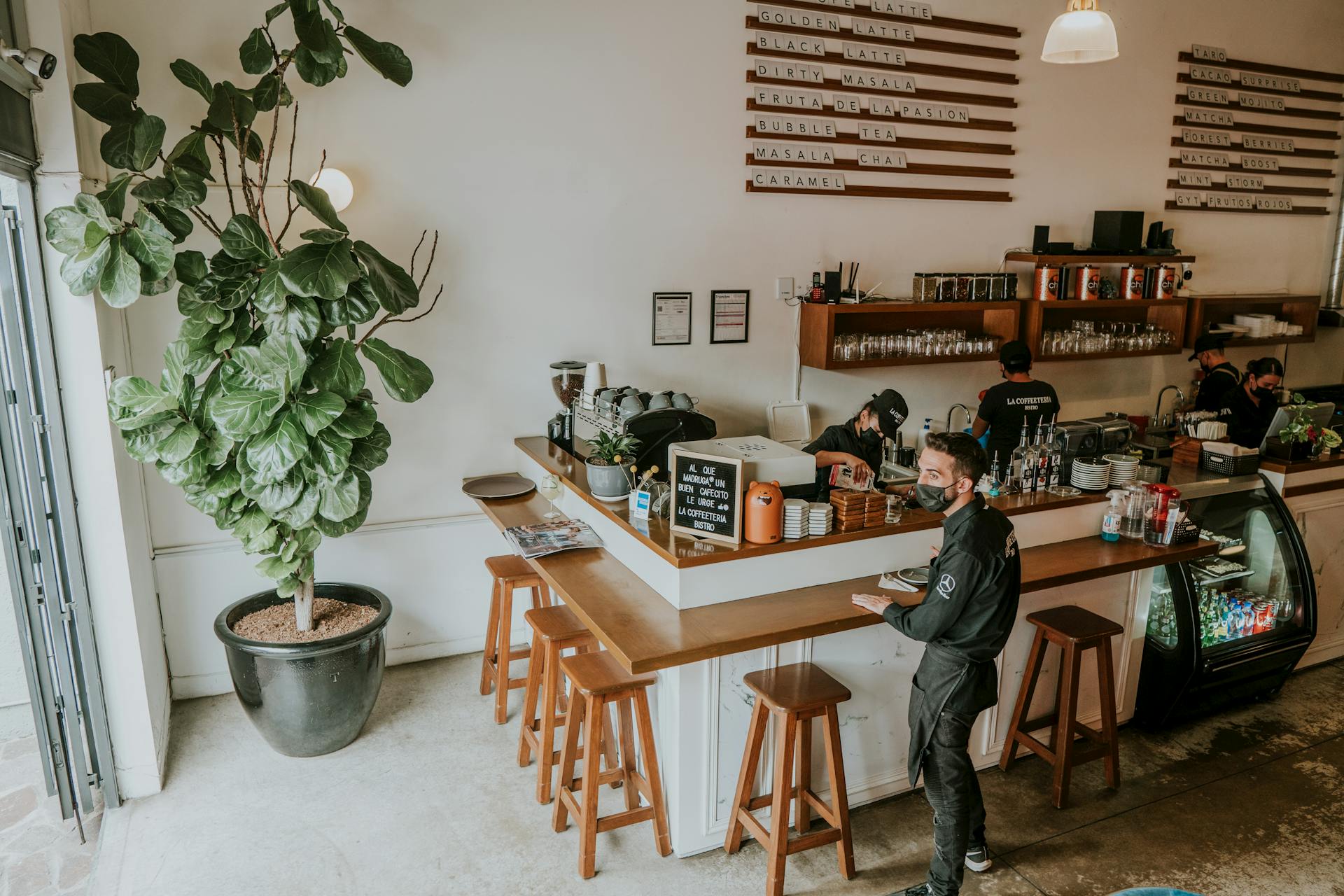
- Light: Bright, indirect sunlight.
- Water: Water when the top 2 inches of soil are dry.
- Humidity: Prefers higher humidity levels.
Read More: Fiddle Leaf Fig Care Guide
4. Peace Lily (Spathiphyllum)
Peace lilies are known for their white blooms and ability to thrive in low light.
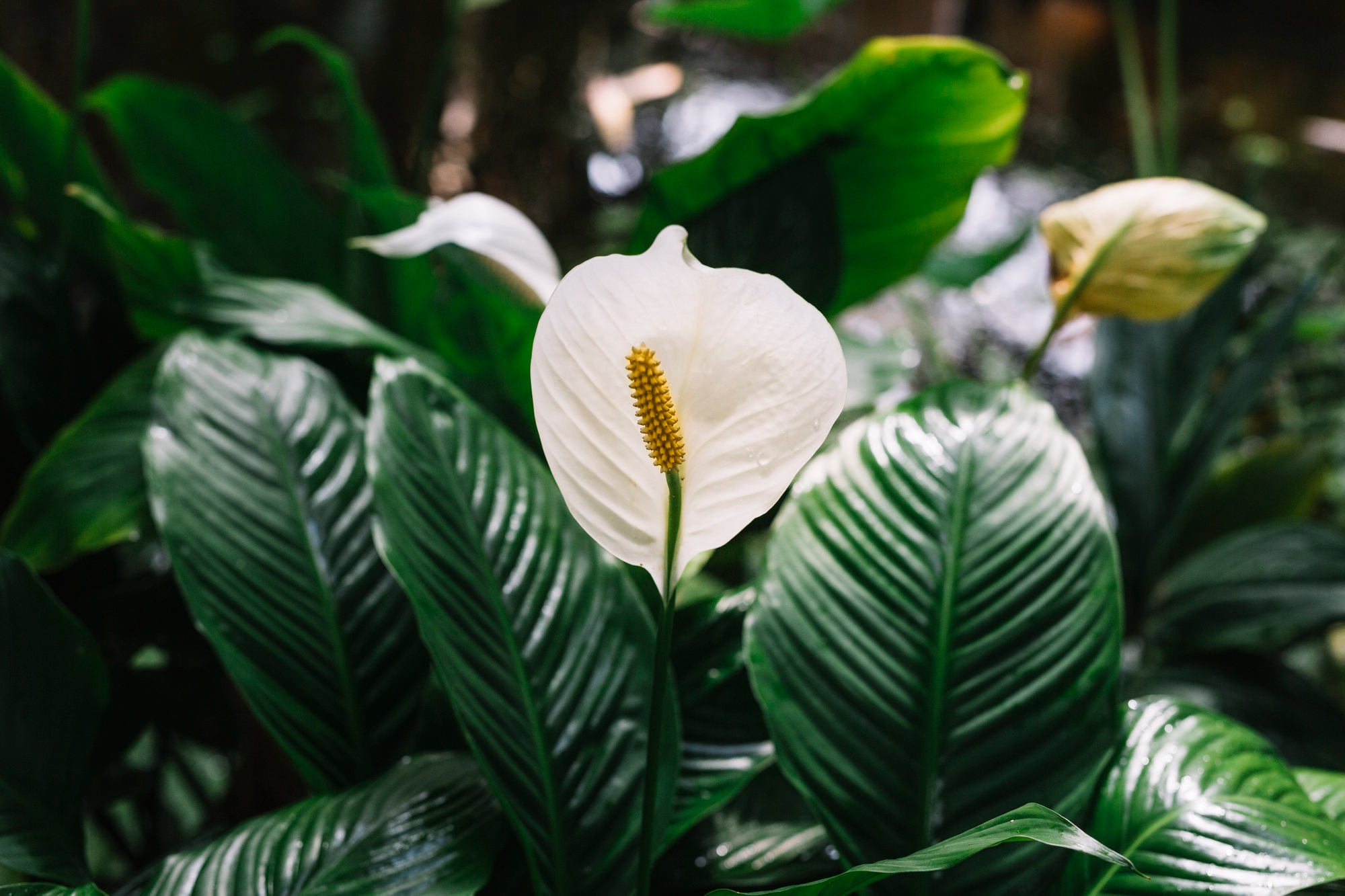
- Light: Low to medium light.
- Water: Water when the soil feels dry.
- Humidity: Prefers moist air.
Learn More: Peace Lily Plant Guide
5. Bird of Paradise (Strelitzia)
Bird of Paradise is a stunning plant with large, banana-like leaves. It can grow tall, making it a perfect choice for high-ceiling spaces.
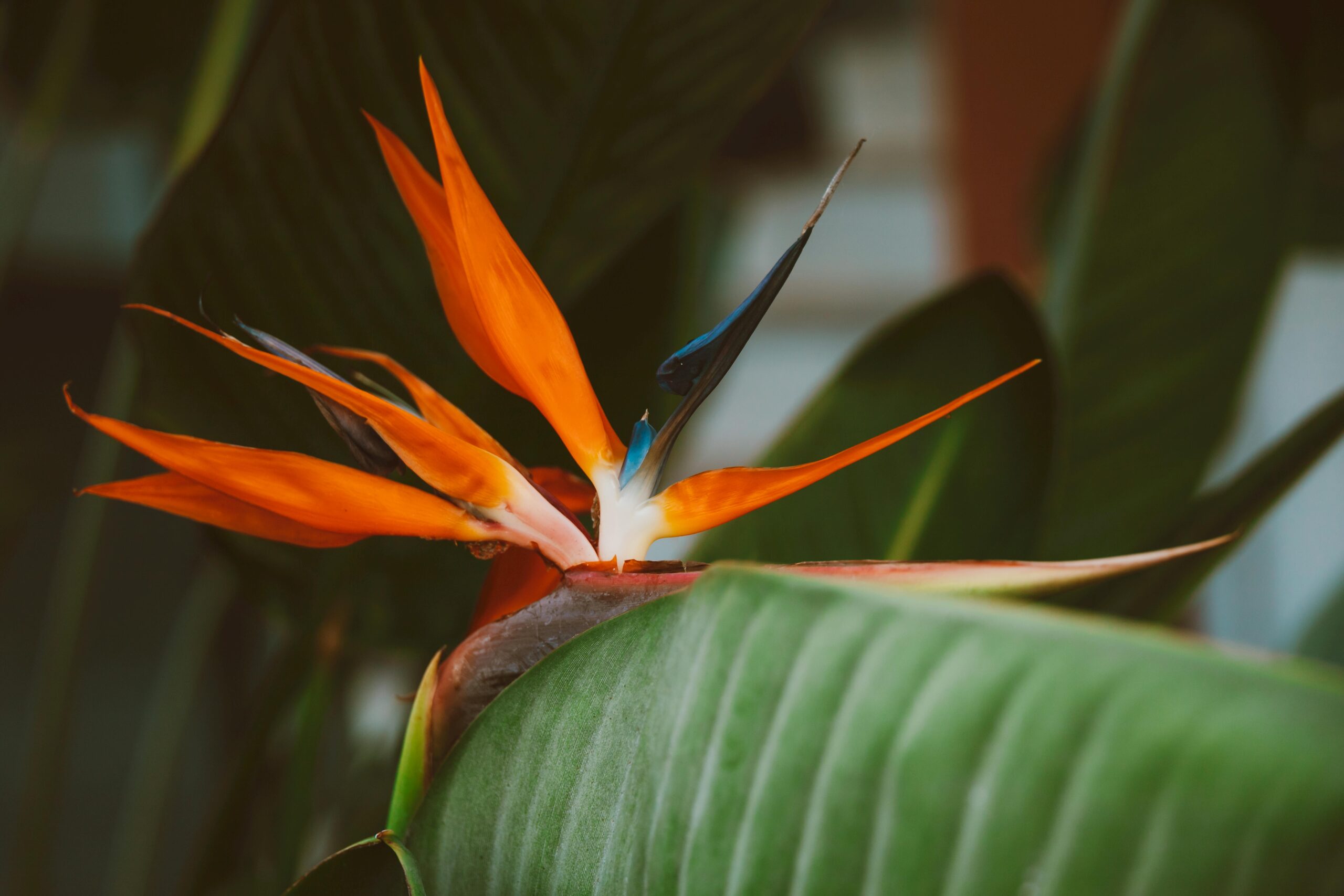
- Light: Bright, indirect light.
- Water: Water when the topsoil is dry.
- Humidity: Enjoys high humidity.
More Info: Bird of Paradise Care Tips
Setting Up the Perfect Environment for Indoor Tropical Plants
Creating the right environment is crucial for the health and growth of your tropical plants. Here’s how to ensure your indoor space mimics their natural habitat:
Also Read: Ornamental Grasses for Every Size Garden
1. Temperature
Tropical plants thrive in warm temperatures. Maintain a temperature range of 65-85°F (18-29°C) during the day and avoid sudden temperature drops at night.
- Tip: Keep your plants away from cold drafts, air conditioners, and heaters, as these can stress the plants.
Read More: How to Manage Indoor Plant Temperature
2. Humidity
Tropical plants love high humidity levels. Aim for a humidity level of 50-70%. Use a humidifier, mist your plants regularly, or place them on a tray filled with water and pebbles to increase humidity.
- Tip: Group plants together to create a micro-habitat with higher humidity.
Learn More: Best Ways to Increase Humidity for Plants
3. Lighting
Most tropical plants prefer bright, indirect sunlight. Direct sunlight can scorch their leaves, while low light can hinder their growth.
- Tip: Place your plants near east or west-facing windows. If natural light is insufficient, consider using grow lights.
Related Link: Best Grow Lights for Indoor Plants
4. Soil and Potting Mix
Use a well-draining potting mix for tropical plants. A mix containing peat moss, perlite, and pine bark works well. This type of soil retains moisture but also allows excess water to drain away, preventing root rot.
- Tip: Repot your plants every 1-2 years to refresh the soil and provide more space for roots.
Learn More: Choosing the Best Soil for Indoor Plants
Watering Tropical Plants Indoors
Watering tropical plants can be tricky, as overwatering or underwatering can lead to problems. Here’s how to water your indoor tropical plants correctly:
1. Check Soil Moisture Regularly
Check the soil moisture by inserting your finger an inch into the soil. If it feels dry, it’s time to water. If it’s still moist, wait a few more days.
- Tip: Use a moisture meter for more accuracy.
2. Watering Schedule
Create a watering schedule based on the type of plant, light exposure, and indoor humidity. Tropical plants usually require watering once a week, but it can vary depending on the environment.
- Tip: Water the plants early in the day to allow any excess water to evaporate.
3. How to Water
Water your plants thoroughly until water drains out of the bottom of the pot. This ensures that the roots receive enough water without becoming waterlogged.
- Tip: Avoid letting the plants sit in water, as it can lead to root rot.
Read More: How to Water Indoor Plants Properly
Fertilizing Indoor Tropical Plants
Fertilizing your tropical plants will promote healthy growth and vibrant leaves. Use a balanced, water-soluble fertilizer every 4-6 weeks during the growing season (spring and summer).
1. Types of Fertilizer
Use a liquid or slow-release fertilizer that contains nitrogen, phosphorus, and potassium. You can also use organic fertilizers like fish emulsion or compost tea.
- Tip: Reduce fertilizing in the fall and winter when plant growth slows down.
Learn More: Best Fertilizers for Houseplants
Common Problems and Solutions for Indoor Tropical Plants
Growing tropical plants indoors can sometimes be challenging. Here are some common problems and how to solve them:
1. Yellowing Leaves
Yellow leaves can indicate overwatering, underwatering, or nutrient deficiency. Check the soil moisture and adjust your watering schedule. Fertilize the plant if you suspect a lack of nutrients.
2. Brown Leaf Tips
Brown tips are usually caused by low humidity or excessive fertilizer. Increase humidity around the plant and reduce the frequency of fertilizing.
3. Pests
Common pests include spider mites, mealybugs, and aphids. Wipe down the leaves with a damp cloth and use insecticidal soap or neem oil to treat infestations.
Read More: How to Deal with Common Houseplant Pests
Styling Tips for an Indoor Tropical Garden
Make your indoor tropical garden visually appealing by using different plant sizes and styles. Consider placing large plants like Monstera in corners and using hanging planters for trailing plants like Philodendrons. Grouping plants together based on their lighting and humidity needs to create a cohesive look and feel. Experiment with different pot styles and textures to add character and charm to your indoor space.
1. Use Plant Stands and Shelves
Utilize plant stands, shelves, or tiered plant racks to elevate your plants and create visual layers. This will allow you to showcase plants of various heights and make the room feel more dynamic.
- Tip: Place taller plants at the back and shorter plants in the front for a cascading effect.
Related Link: Best Plant Stands and Shelves for Indoor Plants
2. Mix and Match Pot Styles
Use a combination of ceramic, terracotta, and woven baskets to give your indoor tropical garden a diverse look. Choose pots with similar color schemes or patterns to create harmony.
- Tip: Consider using pots with built-in drainage holes to prevent waterlogging.
Learn More: Choosing the Right Pots for Your Plants
3. Create a Focal Point
Use a large tropical plant like the Bird of Paradise or Fiddle Leaf Fig as a focal point in your room. Surround it with smaller plants to draw attention to the centerpiece.
- Tip: Place your focal plant in an attractive pot that complements the room’s decor.
Related Link: How to Design an Indoor Garden
Propagating Tropical Plants Indoors
Propagation is a great way to expand your indoor garden without buying new plants. Here’s how you can propagate some common tropical plants:
1. Propagating Monstera Deliciosa
Monstera can be propagated through stem cuttings. Cut a healthy stem with at least one node and place it in water or a moist potting mix. Roots should develop in a few weeks, after which you can plant it in a pot.
2. Propagating Philodendron
Take a cutting below a leaf node and place it in water. Change the water every few days until roots develop. Once roots are 2-3 inches long, transplant the cutting into soil.
3. Propagating Snake Plant (Sansevieria)
Snake plants can be propagated through leaf cuttings. Cut a healthy leaf into 3-4 inch sections and place them upright in a well-draining potting mix. Keep the soil slightly moist until roots form.
Read More: Step-by-Step Guide to Propagating Indoor Plants
Seasonal Care for Indoor Tropical Plants
Tropical plants require different care during various seasons. Here’s how to adjust your care routine throughout the year:
1. Spring and Summer
During the growing season, your plants will need more water and nutrients. Increase watering frequency and fertilize every 4-6 weeks. Check for signs of new growth and prune as necessary.
2. Fall and Winter
Growth slows down in the colder months. Reduce watering and stop fertilizing. Keep plants away from cold drafts and maintain stable temperatures.
- Tip: Mist your plants more often in winter if indoor heating dries out the air.
Learn More: Seasonal Plant Care Guide
Troubleshooting: Common Indoor Tropical Plant Issues
Even with the best care, issues can arise. Here’s how to troubleshoot common problems:
1. Drooping Leaves
Drooping leaves can be a sign of overwatering or underwatering. Check the soil moisture level and adjust your watering schedule accordingly. If the soil is too wet, let it dry out before watering again.
2. Leaf Drop
Leaf drop can be caused by sudden temperature changes or low humidity. Ensure your plants are in a stable environment and increase humidity if necessary.
3. Root Rot
Root rot occurs due to overwatering and poor drainage. Remove the plant from its pot, trim off any mushy roots, and repot in fresh, well-draining soil.
- Tip: Use pots with drainage holes and avoid letting water sit in the saucer.
Related Link: How to Identify and Treat Root Rot
Best Places to Display Tropical Plants Indoors
Where you place your plants can impact their growth and appearance. Here are some ideas for displaying your indoor tropical plants:
1. Living Room
The living room is an ideal spot for large, eye-catching tropical plants. Place plants like Monstera or Fiddle Leaf Fig in corners or next to seating areas.
2. Bedroom
Add a calming touch to your bedroom with Peace Lilies or Snake Plants. These plants also help improve air quality, making them perfect for sleeping areas.
3. Bathroom
Bathrooms are usually more humid, making them ideal for moisture-loving plants like ferns and Calatheas. Place them on shelves or countertops to brighten up the space.
- Tip: Ensure your bathroom has enough light, or use grow lights if necessary.
Learn More: Best Houseplants for the Bathroom
Final Thoughts on Growing Tropical Plants Indoors
Growing tropical plants indoors can transform your home into a green oasis. With proper care, you can enjoy lush, healthy plants that thrive and beautify your space. Choose the right plants, set up an ideal environment, and maintain them regularly to create your very own indoor tropical garden. Whether you’re a beginner or an experienced gardener, these tips and tricks will help you succeed in growing stunning tropical plants indoors.
Happy gardening!
Related Resources:
- How to Grow and Care for Indoor Plants
- Best Tropical Houseplants for Beginners
- Tips for Maintaining Indoor Tropical Plants
This guide provides everything you need to know about growing tropical plants indoors. Follow these steps, and you’ll have a thriving indoor tropical garden that adds beauty and life to your home.
FAQs: How To Grow Tropical Plants Indoors
Growing tropical plants indoors can be an exciting and rewarding endeavor. To help you get started and succeed, here are answers to some frequently asked questions about growing tropical plants indoors:
1. What are the best tropical plants for beginners to grow indoors?
If you’re new to growing tropical plants indoors, start with plants that are hardy and low-maintenance. Some of the best tropical plants for beginners include the Snake Plant (Sansevieria), Peace Lily (Spathiphyllum), Spider Plant (Chlorophytum comosum), and Pothos (Epipremnum aureum). These plants are known for their resilience and ability to adapt to various indoor conditions. They can tolerate low light levels, require minimal watering, and bounce back quickly from occasional neglect, making them ideal for beginners.
2. How much light do tropical plants need when grown indoors?
Most tropical plants thrive in bright, indirect light, which mimics the filtered sunlight they receive under the canopy of trees in their natural habitat. Place them near east or west-facing windows where they can get plenty of natural light without being exposed to harsh, direct sunlight, which can scorch their leaves. If your home doesn’t get enough natural light, consider using artificial grow lights to provide the necessary illumination. Choose full-spectrum LED grow lights to mimic natural sunlight and place them about 12-18 inches away from your plants.
3. What kind of soil is best for tropical plants?
Tropical plants prefer a well-draining potting mix that retains moisture but does not become waterlogged. A standard potting mix with added perlite or orchid bark works well for most tropical plants. You can also use a mix containing peat moss, pine bark, and vermiculite to ensure proper drainage and aeration. Avoid using garden soil, as it tends to be heavy and may retain too much moisture, leading to root rot.
4. How do I maintain humidity levels for indoor tropical plants?
Most tropical plants require high humidity levels of 50-70% to thrive. If the humidity in your home is low, consider using a humidifier to maintain optimal levels. Alternatively, mist your plants regularly, place them on a tray filled with water and pebbles, or group plants together to create a micro-habitat with increased humidity. You can also move plants to more humid areas like bathrooms or kitchens. Monitor humidity levels using a hygrometer and adjust accordingly, especially during the winter months when indoor air tends to be drier.
5. How often should I water my indoor tropical plants?
The frequency of watering depends on the type of plant, pot size, and indoor environment. In general, water tropical plants when the top 1-2 inches of soil feel dry to the touch. Avoid overwatering, as it can lead to root rot. Use a watering can with a long spout to reach the soil evenly and thoroughly. Water the plant until you see excess water draining out of the bottom of the pot, but never let the plant sit in standing water. Reduce watering in the winter months when growth slows down.
6. What are the common pests that affect indoor tropical plants, and how do I prevent them?
Common pests that affect indoor tropical plants include spider mites, mealybugs, aphids, scale insects, and fungus gnats. To prevent pests, inspect your plants regularly, especially the undersides of leaves. Remove any visible pests by wiping the leaves with a damp cloth. For larger infestations, use insecticidal soap or neem oil to treat the plants. Ensure good airflow around your plants and avoid overwatering, as soggy soil can attract pests like fungus gnats.
7. How can I propagate tropical plants indoors?
Propagation methods vary depending on the type of plant. Some common methods include:
- Stem Cuttings: For plants like Philodendron and Pothos, take a cutting below a leaf node, place it in water or soil, and wait for roots to develop.
- Division: For plants like Peace Lily and Snake Plant, gently divide the plant into smaller sections with roots attached and repot.
- Leaf Cuttings: For plants like Sansevieria, cut a leaf into sections and place them in soil until new growth appears.
Propagation is best done in spring or early summer when the plants are actively growing.
8. What are the signs that my tropical plant is unhealthy, and how can I fix it?
Unhealthy plants may show signs such as yellowing leaves, brown leaf tips, leaf drop, or stunted growth. Yellow leaves often indicate overwatering or underwatering. Brown tips usually signal low humidity or excessive fertilizer use. Leaf drop can be due to sudden changes in light or temperature. Assess the plant’s environment and care routine to identify and address the problem. Adjust watering, increase humidity, or move the plant to a location with more stable conditions as needed.
9. How can I style tropical plants indoors to enhance my home decor?
Styling tropical plants indoors involves choosing the right pots, plant stands, and arrangements. Use a combination of large floor plants like Monstera or Fiddle Leaf Fig and smaller tabletop plants like Peace Lily or Calathea. Place plants at varying heights using plant stands or shelves to create depth and interest. Choose decorative pots that match your home’s decor, and consider using hanging planters for trailing plants. Grouping plants with similar light and humidity needs together can create a cohesive look.
10. Can I grow tropical plants in low-light conditions?
Yes, some tropical plants can tolerate low-light conditions. Examples include ZZ Plant (Zamioculcas zamiifolia), Peace Lily, Pothos, and Snake Plant. While these plants can survive in low light, they may grow more slowly and produce smaller leaves. Avoid placing them in complete darkness; instead, choose spots that receive at least some indirect natural light or supplement with artificial lighting like grow lights if necessary.
